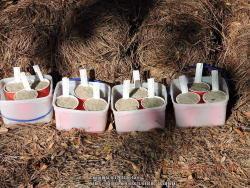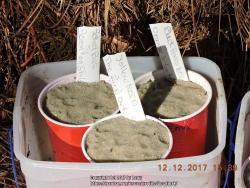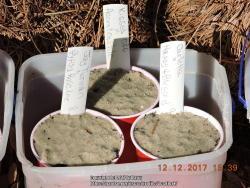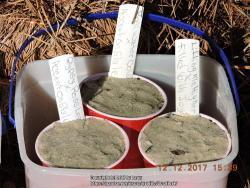Catherine, I did plant some seed, very late in the season. In fact it was on Nov. 10th. I was bored from being cooped up for months with my healing foot. So, I dug out some crosses that I'm anxious to see and got them started. It's in my blog if you care to look.
As for the seedlings, they're sitting on my south facing porch, get some morning and afternoon sun, blocked from frost and regularly misted with water and hydrogen peroxide. So far, they're doing just fine. I was going to pot them up in 1gl pots, but so far I've been preoccupied with other commitments. If'n I can remember, I'll post and updated photo tomorrow.
OBTW, the white seedlings don't survive. I'm sure some here,
@sooby perhaps, will explain why. It escapes my memory right now.
Edit to add, that back in Nov., we were still experiencing very warm temps and nighttime temps were still in the upper 50/lower 60s. The seed, I started were from my crosses and I didn't spend any $$s on them. So, if they die off, well then I'm only out time and not the green...




